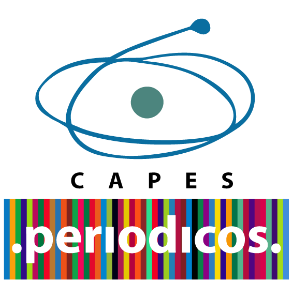Design for Character Development: archetypal psychology as a implement for creating and designing characters for an animated series
DOI:
https://doi.org/10.5433/2236-2207.2014v5n1p09Keywords:
Character design, Archetypal psychology, Digital, Animation.Abstract
From the innate desire of telling stories, man seeks for depictions of everyday life through drawing, sculptures, photographs, and other media that allow him to express himself. Such sharing is increasingly reaching more people, due to the development of technologies and the return of these for communication. Within this perspective, this study aims to present the creation process of characters for a children’s animation, focusing on media able to support digital animation. In this case study, we sought to understand the processes of characters design through archetypal psychology, inserted in the stage of production and appropriate to the content of children’s narratives. Thus, we prepared a form guide, targeted to the design of animated characters, for the professionals of DesignLab, a laboratory linked to the Design Undergraduate and Graduate Program of Universidade Federal de Santa Catarina. As a result, we obtained the creation of the characters’ psychological profiles that will be part of the series designed by the laboratory. From the characters, the visual components of the animation will be drawn up according to their trajectories throughout the story.
Downloads
References
BUGAY, Nataska. Os Gatunos. 2004. 85f. Trabalho de Conclusão de Curso (Graduação em Comunicação e Expressão Visual) - Universidade Federal de Santa Catarina, 2004.
CAMPBELL, Joseph. O herói de mil faces. São Paulo: Pensamento, 2007.
CAMPOS, Flavio de. Roteiros de cinema e televisão. Rio de Janeiro: Zahar, 2011.
JUNG. Carl Gustav. Os arquétipos e o inconsciente coletivo. Rio de Janeiro: Vozes, 2000.
MOLETTA, Alex. Criação de curta-metragem em vídeo digital: uma proposta para produções de baixo custo. São Paulo: Summus, 2009.
NESTERIUK, Sérgio. Dramaturgia da série de animação. São Paulo: Animatv, 2011.
SEEGMILLER, Don. Digital character painting using Photoshop CS3. Massachusetts: Charles River Media, 2008.
VOGLER. Christopher. A jornada do escritor: estruturas míticas para escritores. 2.ed. Rio de Janeiro: Nova Fronteira, 2006.
Downloads
Published
How to Cite
Issue
Section
License
Projética está licenciada sob a Creative Commons Attribution CC-BY 4.0 International. Os autores detém os direitos autorais e concedem à revista o direito de exclusividade de primeira publicação.
Os autores dos trabalhos aprovados autorizam Projética a, após a publicação, ceder seu conteúdo para reprodução em indexadores de conteúdo, bibliotecas virtuais e similares.
Os autores assumem que os textos submetidos à publicação são de sua criação original, responsabilizando-se inteiramente por seu conteúdo em caso de eventual impugnação por parte de terceiros. As opiniões emitidas pelos autores dos artigos são de sua exclusiva responsabilidade.
A revista se reserva o direito de efetuar, nos originais, alterações de ordem normativa, ortográfica e gramatical, com vistas a manter o padrão culto da língua e a credibilidade do veículo. Respeitará, no entanto, o estilo de escrever dos autores. Alterações, correções ou sugestões de ordem conceitual serão encaminhadas aos autores, quando necessário. Nesses casos, os artigos, depois de adequados, deverão ser submetidos a nova apreciação. As provas finais não serão encaminhadas aos autores.










